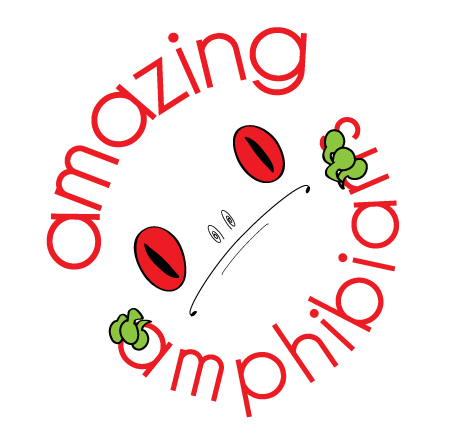|
Leptophryne cruentata (Tschudi, 1838)
Bleeding Toad, Kodok Merah | family: Bufonidae genus: Leptophryne |
 © 2009 Georg Moser (1 of 2) |
|
|
|
Description Leptophryne cruentata is a small and slender toad named after its characteristic red tinge and red spots or marbling. Females of this species have a snout-vent length of 25-40 mm, while males have a snout-vent length of 20-30 mm. The skin is covered with small tubercles. The parotoid gland is small and sometimes indistinct. No bony ridges are present on the head. Finger and toe tips are slightly swollen. The toes are webbed, with the webbing reaching up to the final subarticular tubercles on toes III and V. Dorsally, the skin is black with red or yellow spots or marbling. There are two color morphs for this species. One color morph has a black hour-glass marking bordered with red and yellow in the middle of the dorsum. The other color morph is black with yellow spots scattered all over the back. The ventrum is reddish or yellowish. Tadpoles are small and black, and generally resemble those of the genus Bufo. However, Leptophryne cruentata tadpoles have lower lips with papillae. The denticle formula is II/III or I+1-1/III. Distribution and Habitat Country distribution from AmphibiaWeb's database: Indonesia
Life History, Abundance, Activity, and Special Behaviors Trends and Threats Possible reasons for amphibian decline General habitat alteration and loss Comments
References
Iskandar, D. T. (1998). The Amphibians of Java and Bali. Research and Development Centre for Biology-LIPI, Bogor, Indonesia. Originally submitted by: Janel Marcelino (first posted 2006-03-15) Edited by: Kellie Whittaker, updated Ann T. Chang (2013-07-01) Species Account Citation: AmphibiaWeb 2013 Leptophryne cruentata: Bleeding Toad <https://amphibiaweb.org/species/339> University of California, Berkeley, CA, USA. Accessed Jan 2, 2025.
Feedback or comments about this page.
Citation: AmphibiaWeb. 2025. <https://amphibiaweb.org> University of California, Berkeley, CA, USA. Accessed 2 Jan 2025. AmphibiaWeb's policy on data use. |




 Map of Life
Map of Life Featured in Amazing Amphibians on 1 July 2013
Featured in Amazing Amphibians on 1 July 2013